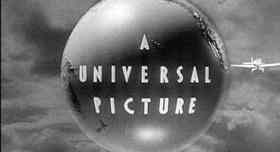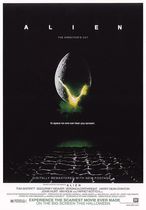Our editor-in-chief Nate Yapp is proud to have contributed to the new book Hidden Horror: A Celebration of 101 Underrated and Overlooked Fright Flicks, edited by Aaron Christensen. Another contributors include Anthony Timpone, B.J. Colangelo, Dave Alexander, Classic-Horror.com's own Robert C. Ring and John W. Bowen. Pick up a copy today from Amazon.com!
Universal Terror IV: Invisible Men and Black Cats
In 1933, Universal produced only one horror film. It was The Invisible Man. It was the third horror film directed by James Whale.
The film opens on the snow covered village of Iping. A mysterious stranger (Claude Rains), totally covered with bandages and wearing dark goggles, checks into the Lion's Head Tavern and Inn. Meanwhile in his lab, Dr. Cranley (Henry Travers) is trying to comfort his daughter Flora (Gloria Stuart) about the disappearance of her boyfriend Jack Griffin. Cranley's other assistant Kemp (William Harrigan) tells her of his feelings for her, but he is rejected.
At the Lion's Head, the owners Jenny (Una O'Connor) and Herbert (Forrester Harvey) Hall tire of the bandaged man's rude manner. They ask a policeman to evict him. When the police and the townspeople approach the stranger, he removes his bandages revealing that he is invisible. The Invisible Man attacks the villagers and escapes into the town.
Meanwhile, Dr. Cranley and Kemp search Griffin's lab and discover that he has been using the drug "monocain". "Monocain" is a bleaching chemical that also causes insanity.
That night, the Invisible Man visits Kemp's house. He reveals that he is Jack Griffin. He wants Kemp to be his partner in his "reign of terror". Kemp and Griffin travel back to Iping to get Griffin's notebooks.
While in Iping he kills a police chief, prompting a nation-wide manhunt. in the following days, the Invisible Man causes a train wreck and other mayhem throughout the area. Kemp tells the police that Griffith is in his house. The Invisible Man tells Kemp that he will kill him because of his betrayal. The next day, Griffin causes Kemp to die in a car wreck.
The Invisible Man takes refuge in a barn during snow. A farmer notices his hay moving as Griffin breathes. The farmer notifies the police and they start a fire around the barn to drive Griffin out. A policeman sees foot prints in the snow and shoots. His shot puts Griffin in the hospital. Flora is at his side when he dies, his death causing him to gradually become visible again.
As far back 1931, Universal had planned a screen version of H.G Well's novel "The Invisible Man." Universal also bought the rights to the novel "The Murderer Invisible" by Phillip Wylie. The studio intended for The Invisible Man to be a blending of H.G. Well's original novel and Wylie's novel. Universal eventually dropped that idea and started to seek other story ideas. Director James Whale hired his friend R.C. Sheriff to write the screenplay. When Sheriff was asigned The Invisible Man, Universal had already gathered a large amount of rejected scripts. R.C. Sheriff was supposed to pick out the best parts of each screenplay and base his original screenplay on them. Some of the ideas in the scripts were quite preposterous. One version turned the Invisible Man into a transparent vigilante in Czarist Russia. In one version, the Invisible Man was a Martian who wanted to invade the earth with an invisible army. Sheriff read the other screenplays and decided they lacked the stylish charm of Well's original novel. R.C. Sheriff asked for an actual copy to base his screenplay on, but the studio said that there was not one available. Universal also said that Sheriff had to base his screenplay on the rejected versions. Sheriff refused the studio's demands and found a copy of H.G. Well's "The Invisible Man" in a Chinatown shop for fifteen cents. R.C. Sheriff based his screenplay on Well's novel, while adding characters and story elements. The characters of Dr. Cranley, Flora, and the drug "monocain" were all created by Sheriff.
In 1933, The Invisible Man went into production. Boris Karloff was to play the title role. Advertisements proclaiming Karloff as the star were printed. Karloff left the film because Universal denied him a raise he had been promised. After Boris Karloff's departure, James Whale turned to Colin Clive to play the Invisible Man. Clive left for England when production began, so another actor had to be selected. James Whale then chose an unknown actor named Claude Rains. James Whale had seen Claude Rains perform on the stage before, but it was his screen test for RKO's A Bill of Divorcement that made up Whale's mind. Claude Rains would become one of the most popular character actors of all time, appearing in films like Casablanca (1942) and Mr. Smith Goes to Washington (1939).
The other "star" of the film was John P. Fulton's special effects. The amazing special effect sequences astonished audiences of 1933. The scenes involving the Invisible Man being totally unseen were easy to accomplish. Piano wire was used to suspend objects in mid air, so it would appear as thought they were being held by the Invisible Man. The most difficult scenes involved the Invisible Man being partially clothed. John P. Fulton used a stunt double clothed in non-reflective black velvet and the Invisible Man's costume for the shots. The stunt man stood in a set dressed in black velvet and performed the Invisible Man's actions. Fulton then made a composite shot of the stunt man in black velvet and a normal background. When Fulton isolated and removed the black, it created the illusion of invisibility. For the death of the Invisible Man, Fulton used a series of slow-lap camera dissolves to have a real skeleton fade in. Fulton then had the skeleton gradually fade into Claude Rains.
The greatness of The Invisible Man comes from many factors. Claude Rain's performance ranks as the greatest off-screen performance of all time. R.C. Sheriff's script is one of the most intelligent and well written in the horror genre. John P. Fulton's special effects are still impressive this day. When all of those factors are added up, it is no wonder that The Invisible Man is considered one of the greatest horror films of all time.
In 1934, Universal decided that a film featuring the two "kings of horror" would be profitable. The Black Cat was the first film to feature both Boris Karloff and Bela Lugosi. The Black Cat begins with Joan (Jacqueline Wells) and Peter (David Manners) Allison meeting the mysterious Dr. Vitus Werdegast (Bela Lugosi) on a train trip through Austria. Joan, Peter, Werdeagast, and his assistant are in a bus wreck after the train ride. They seek shelter at the ultra-modern home of Hjalmar Poelzig (Boris Karloff). Hjalmar was leader of a large prison camp during World War One and he built his house on that site. Werdegast was a prisoner there and blames Poelzig on the death of his wife and daughter.
Poelzig takes Werdegast to an underground chamber. Poelzig shows Werdegast that he was married to Werdegast's wife and has preserved her body under glass. Werdegast is about to shoot Poelzig when a black cat enters. Werdegast suffers from an extreme phobia of cats and drops the gun.
Hjalmar is high priest of Satanic cult and wishes to make Joan his bride at a black mass. Werdegast demands that Poelzig leave her alone. Werdegast and Poelzig play chess to determine what will happen to her. Werdegast loses the game and Joan's fate is sealed.
Karen (Lucille Lund), Poelzig's wife, meets Joan. Karen tells Joan that her maiden name is Werdegast and that her father died a long time ago. Joan tells Karen that her father is alive and in the house. Poelzig hears the conversation and then kills Karen.
When the time of the black mass approaches, Joan is tied to an altar. While Poelzig chants a mysterious incantation, a worshiper faints. While Poelzig's attention is turned, Werdegast and his assistant rescue Joan from the altar. They take her to the underground chamber where Poelzig keeps his wives. Joan tells Werdegast his daughter is married to Poelzig. Poelzig has followed them down and struggles with Werdegast. Werdegast's assistant subdues Poelzig and they hook him up to a rack. Werdegast has gone mad and skins Poelzig alive. Peter Allison walks in on him and shoots him, believing he will hurt Joan. Joan and Peter escape before Werdegast pulls a switch that ignites dynamite under the house.
The Black Cat was like Murders in the Rue Morgue because it took only its title from an Edgar Allen Poe story and nothing else. The script was originally a combination of Poe's "The Fall of the House of Usher" and "The Black Cat", but that idea was abandoned. Director Edgar G. Ulmer wrote an original story to base the film on. The story was based on the exploits of legendary Satanist Aleistar Crowley. The character of Hjalmar Poelzig was named after an Austrian set designer and architect named Hans Poelzig.
Filming for The Black Cat began on February 28, 1934. The budget of the film was $90,000, a large budget for a film in 1934. A great deal of publicity surrounded the teaming of Boris Karloff and Bela Lugosi. Boris Karloff later said this about working with Bela Lugosi on The Black Cat: "Bela was very suspicious on the set. Suspicious of tricks, fearful of what he regarded as scene stealing. Later when he realized I didn't go in for such nonsense we became friends."
The sets were designed by Charles D. Hall. The art-deco sets still look futuristic sixty-five years later. The Poelzig house is a stark contrast to the dusty, gothic sets of previous films. The Poelzig mansion gives Karloff and Lugosi a great habitat to carry out their sinister deeds.
Universal Studios believed that The Black Cat was too gruesome for mass audiences of 1934. Universal ordered Edgar G. Ulmer to film three and a half more days of retakes. The extra days of filming pushed the budget of the film over $95,000.
Universal's money was well spent, The Black Cat became Universal's biggest grosser of the year. The Black Cat remains a classic of the horror film because of Boris Karloff and Bela Lugosi's menacing performances. The perverse flares of lust, torture, and Satanism make The Black Cat one of the most unusual horror films of Universal.
| Universal Terror | ||
|---|---|---|
| << Part 3 | Part 4 | Part 5 >> |








